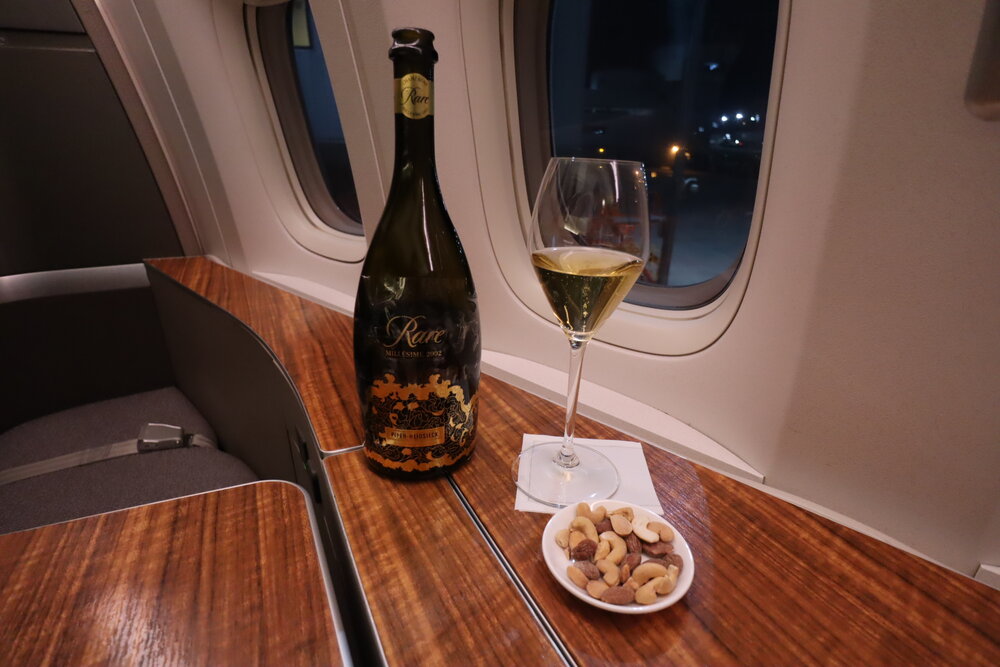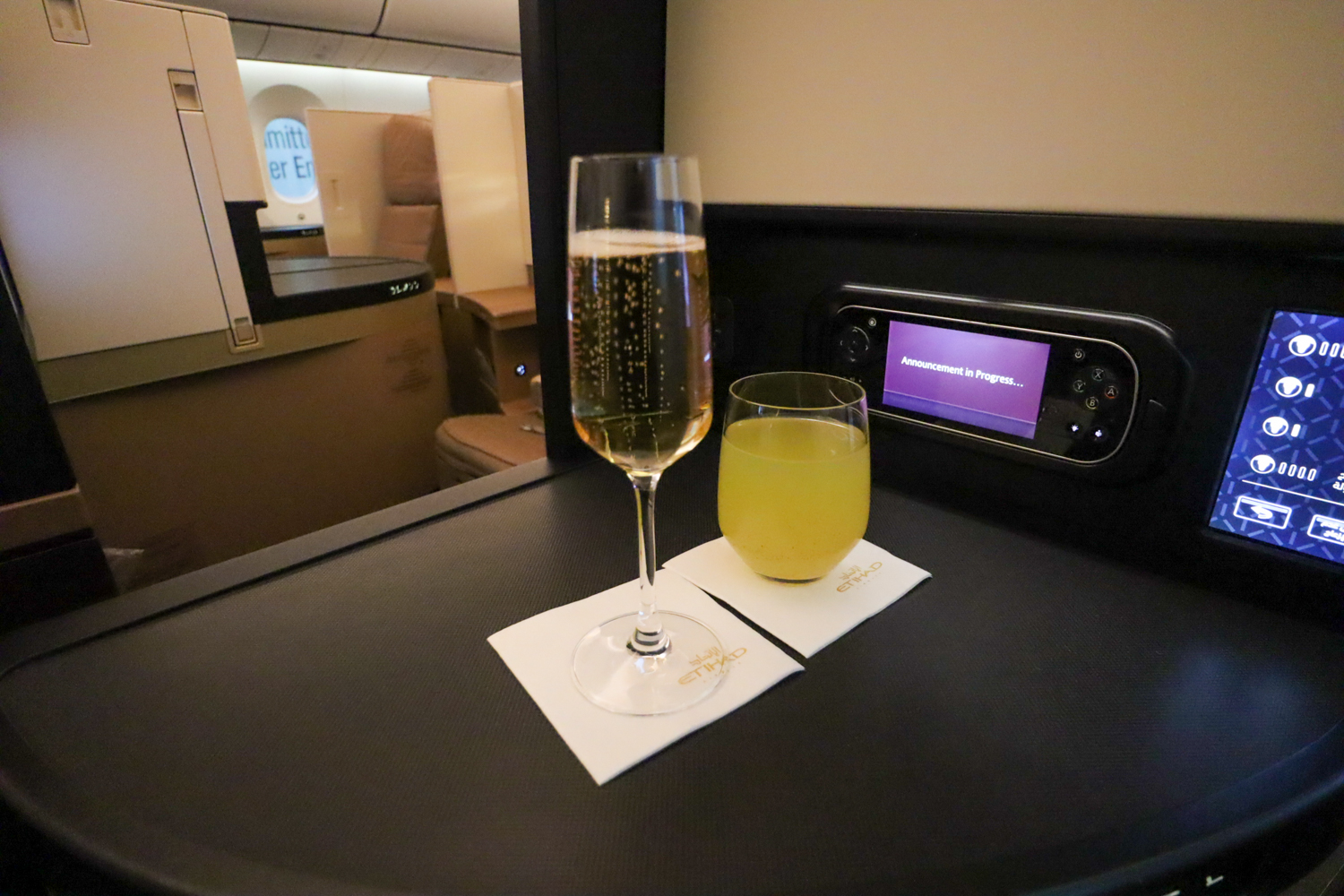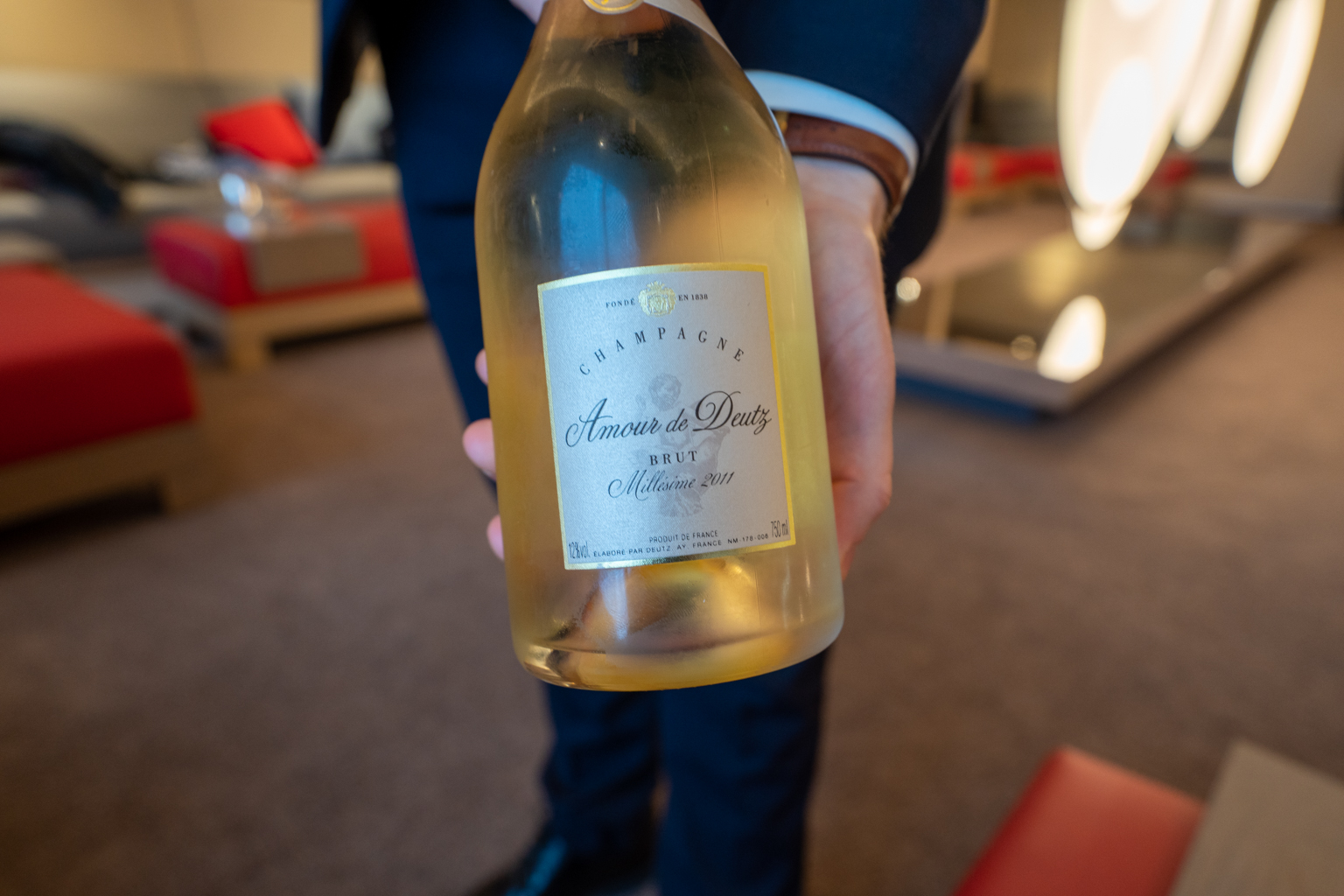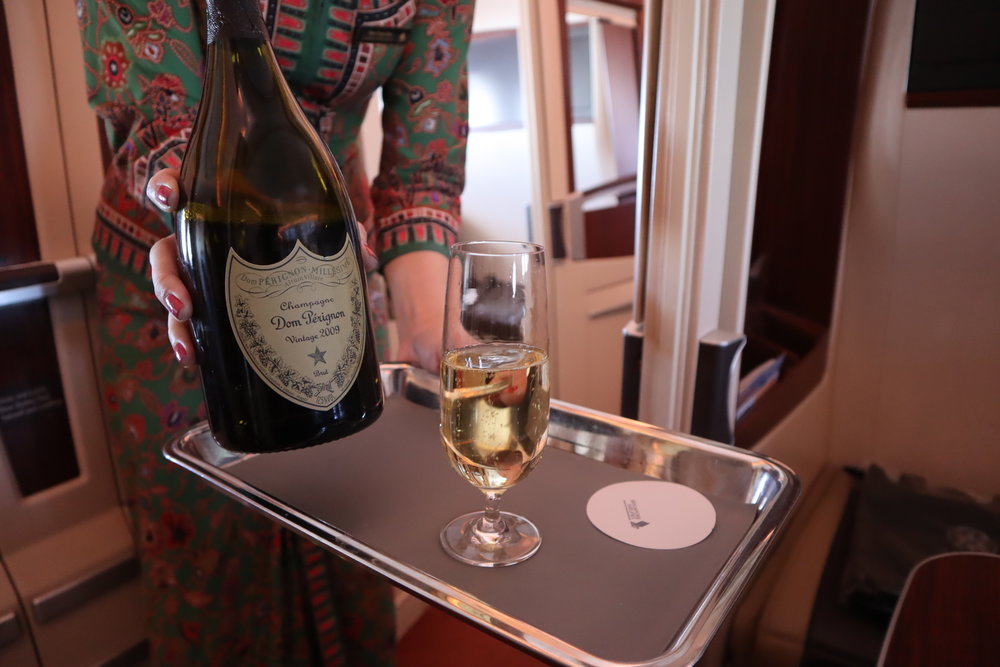Have you ever found yourself standing in the aisle of your local liquor shop staring at a bottle of wine, or seated in a restaurant flipping through the pages of a seemingly endless wine list, and thought to yourself – what the heck am I looking at?
The world of wine can be an intimidating topic for some, and many have the perception of the hobby being expensive, unapproachable, and pretentious.
While I can’t fully dispel the lofty reputation that the wine world has built up around itself, I can do my best to make the topic more approachable and easier to digest.
In this article, I’ll touch on the basics of sparkling wine and talk about how different countries have curated their own distinct styles of this beverage, with a focus on Champagne in particular. Next time you’re popping a bottle of bubbles, you’ll know exactly what you’re in for.
What Is Sparkling Wine?
In its simplest form, sparkling wine is fermented grape juice saturated with carbon dioxide to make it fizzy. If you’re like me, you reach for a bottle of bubbles during any special occasion, no matter how big or small.
However, not all sparkling wines are made equal. While they all share the common denominator of being a bottle of bubbly that makes the distinctive “pop” when it’s opened, different kinds of sparkling wines have noticeable differences among them.
You’re likely already aware that Champagne is a French creation, Prosecco hails from Italy, and Cava is the sparkling wine of Spain.
Aside from locations though, what makes these bottles of bubbles different? As it turns out, there’s far more than just their place of origin to differentiate them all. You’re about to discover the unique characteristics for each of these types of sparkling wines.
Wine tip: Sparkling wines are often served in fluted glasses; however, they’re ideally served in a wider glass with a tulip shape, which best allows the sparkling wine’s flavours to come through.
Champagne
What Is Champagne?
There is a saying that goes: “All Champagne is sparkling wine, but not all sparkling wine is Champagne.”
It’s a fairly easy way to remember that Champagne is just a subsection of the overarching sparkling wine category. In order for a sparkling wine to be classified as Champagne, it must come from France’s northwest Champagne region.
In addition to location, the makeup of the wine also needs to be certain varietals (i.e., grapes) and undergo a specific fermentation process in order for it to truly be considered a Champagne.
There are seven distinctive varietals that are permitted for use in the creation of Champagne. Among those, the most widely used are chardonnay, pinot meunier, and pinot noir. Blended together, these grapes create a wonderfully pleasing flavour, especially with the refreshing effervescence of bubbles behind them.
Wine tip: If you see a Champagne bottle labelled with the markings “blanc de blanc” or “blanc de noir”, then those bottles contain only the chardonnay or pinot noir varietal, respectively.
Understanding Terroir
So why has Champagne taken over the world as the gold standard of sparkling wine?
In order to understand the answer to this question, you first need to understand what terroir is. Terroir is a French term used to describe the environmental factors that a region’s particulars – its climate, soils and terrain – have on the growth of a crop.
In simpler terms, terroir can be thought of as “a sense of place”.
Terroir has a unique effect on grapes, and it’s the reason that certain regions in the world are known for producing specific varietals at an exceedingly high quality. These distinct properties specific to the location of where the grapes are grown are what allows those highly trained in the art of wine tasting to identify a wine only by sight, smell, and taste.
In the Champagne region, the terroir is unique, and no other place has the same combination of climate, soil, and topography. This small slice of earth has a wet and cool climate influenced by both oceanic and continental elements.
A mineral-rich limestone subsoil and high concentrate of shells from marine microorganisms provide the vines with year-round hydration, as the highly porous substrate acts as a natural water reservoir. Furthermore, the slopes of Champagne allow for drainage of excess water and exposure to sun.
Combined, these factors create healthy grapes that ripen to the desired level while maintaining a crisp acidity, which is perfect for making Champagne.
Wine tip: If you’re looking for high-quality French sparkling wine, Crémant is a fraction of the price. I would highly recommend picking up a wine with this designation.
How Is Champagne Made?
Champagne’s fermentation process is set with rigid rules and regulations that must be followed. Known as the “traditional method” or the méthode Champenoise, all grapes must be hand-picked, then immediately pressed just twice in a covered environment. From there, the juice is blended together and brought to the cellars for fermentation.
The next step in the Champagne-making process is the second fermentation, something that happens in the bottle over the course of 15 months. Carbon dioxide is created and held in the bottle, adding carbonation to the wine.
After the second fermentation, the wine goes through a process called riddling. The bottles are placed upside down in racks at 35 degree angles, allowing any sediment to sink to the bottom.
Every two days, the bottles are slightly disturbed and put back in the rack; this process continues for eight to 10 weeks until all of the sediment has compacted into the neck of the bottle. The neck is then frozen and the cork removed, bringing all the sediment with it.
Quality Champagne can fetch a hefty price tag due to the laborious process and limited supply of grapes. It takes time to expertly craft Champagne in this way, but the results are well worth the wait for Champagne’s signature profile: a complex yet balanced taste of citrus, fruits, floral notes, minerality and hints of yeast and toast.
So the next time you’re flying on Emirates First Class enjoying Dom Perignon, EVA Air business class enjoying Krug, or Singapore Suites enjoying both, raise your glass and say santé to the labour of love that came all the way from France.
Wine tip: The wire cage (also known as the muselet) on each bottle of Champagne is twisted open with exactly six half-turns, or three full-circle turns, every time.
Cava
Cava is a dry, medium-bodied sparkling wine. Hailing from Spain, Cava is made with three main varietals: Macabeu, Parellada, and Xarel·lo. Following the same traditional method as Champagne, Cava also has a smooth and creamy mouthfeel – an attribute that’s directly related to the second fermentation process that occurs in bottle.
While the method may be the same as Champagne, the terroir in the Penedes region of Catalonia is vastly different, and so are the flavour profiles of Cava. It has a less complex taste that is lemony with floral aromas and delightful pear and melon notes. Cava that has been allowed to age longer on its lees also tend to develop notes of baked apples, brioche, and figs.
Wine tip: Remove your sparkling wine from the fridge 10 minutes prior to serving. This takes the chill out of it and allows those beautiful and distinctive flavours to open up.
Prosecco
Prosecco is Italy’s sparkling wine, and while it is indeed bubbly, those bubbles are manually added later via the Charmat method in large stainless steel tanks. Prosecco is crisp, aromatic, and vibrant, with notes of tropical fruits, peach, and melon.
The best Prosecco wines hail from Valdobbiadene, a hilly region where the Prosecco grape flourishes. Not long ago though, the Prosecco grape was given a new name of “Glera” to help distinguish it from Italy’s Prosecco region.
Glera is often found in good company with other varietals, as it’s possible to blend it with other grapes from the region (including Perera, Verdiso, and Bianchetta) and still qualify as Prosecco, as long as Glera makes up at least 85%.
Wine tip: It can take up to 800 grapes to make one bottle of wine.
Some Words to Know
As you explore the world of sparkling wines, here are a few key terms to know as you build your understanding of bubbly beverages.
- Terroir: A sense of place unique to the region that directly impacts the characteristics of the grape.
- Vintage: The year the grapes were harvested and made into wine.
- Varietal: The type of grapes being used.
- NV / Cuvée: A non-vintage wine made up of a blend of grapes from various years and wine houses. These wines are made with the intention of providing a consistent product for a number of years.
- Brut: A dry wine with little to no sweetness.
- Rosé: During the extraction process, a winemaker may allow the skins of the grape to remain in contact with the juice in order to pigment it, while creating a more complex set of flavours.
- Sec: An-off dry wine with subtle sweetness.
- Demi Sec: A sweet wine (but not a dessert wine).
Wine tip: A sparkling wine cork can reach speeds of up to 40km/h when popped!
Conclusion
A glass of sparkling wine is one of the world’s great beverages, and its consumption is often associated with celebrations, indulgence, and luxury.
Whether you’re flying high at 40,000 feet, popping open a bottle for a joyous occasion, or simply feeling like something bubbly in the evening, I hope this article has given you some insight into the world of sparkling wine, helping you understand more about the coveted Champagne and the other popular styles around the world.




















The first thought that crossed my mind was “why is this article on a travel-related blog?” Then I read it and really enjoyed it. Thanks!
Great article, very informative. Thanks for covering Prosecco, which some might say is a ‘cost-effective’ way to enjoy some bubbles. I also like Franciacorta from Lombardia, which also uses the classic method similar to Champagne.
This is an excellent article. It is very informative and reads easily. I have been trying to educate myself more about wine and sparkling wine and this helped.
Thanks for the feedback Julia, glad it helped you on your path on furthering your knowledge on wine!
Great article. I used to import Champagne and concur with your comments on the region. I have not yet tried the English sparkling that many writers have said may well match Champagne in due course from climate changes as they share the same underlying geology.
I only drink Champagne or sparkling (and beer) and have never found a sparkling to match the higher quality NV Champagnes. Once you start drinking vintage champagne there is nothing on the planet to match the joy each sip brings (I do not drink reds).
Coincidentally just today I checked out my older vintage bottles and a bottle of 1982 Salon is now around $5,000 NZD for which I paid $200 around 1993 so there is money in champagne collecting, but far better to drink it early, as now mentally I think I cannot afford to drink it as it’s too expensive. Champagne well stored, from good houses can last decades. My oldest Champagne is Bollinger 1975RD , I had a bottle around 7 years ago and it was great, getting old but still lovely.
Hey Murray,
That’s amazing, I have yet to have a vintage Champagne that old! I’ll admit I do love a good bottle of Champagne but in the recent years as I have pivoted out of the industry I find it difficult to compel some of the more casual wine drinkers in my life to spend that much money on a bottle of wine and find my self drinking more Cremant and Cava.
Great summary, just one note: Crémant isn’t itself a region, but rather a designation that wine from various regions can use.
Hey Kevin,
You’re correct, Cremant is a designation that wines from regions outside of the Champagne region can use to identify their sparkling wine. Good catch, I worded explanation poorly.
Damn loving these posts from Rohin!
Thanks Marty! More coming soon 🙂
A great summation and written with clarity. Well done.
Thanks Gary!